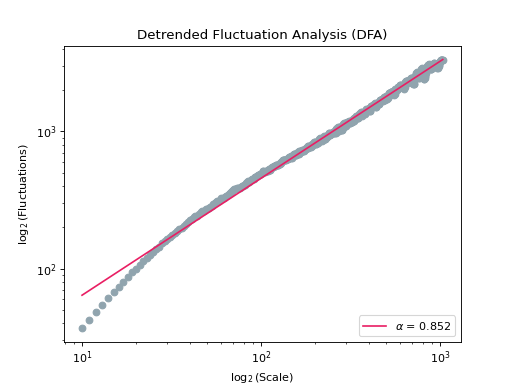glucopy.Gframe.dfa#
- Gframe.dfa(per_day: bool = False, scale='default', overlap: bool = True, integrate: bool = True, order: int = 1, show: bool = False, **kwargs)[source]#
Calculates the Detrended Fluctuation Analysis (DFA) using neurokit2.fractal_dfa().
For more information on the parameters and details see
neurokit2.complexity.fractal_dfa().- Parameters:
per_day (bool, default False) – If True, returns a
pandas.Serieswith the DFA for each day. If False, returns the DFA for the entire dataset. If a day has very few data points, the DFA for that day will be NaN.others – For more information on the rest of the parameters see
neurokit2.complexity.fractal_dfa().
- Returns:
dfa – Detrended fluctuation analysis.
- Return type:
float | pandas.Series
Examples
Calculating the DFA for the entire dataset:
In [1]: import glucopy as gp In [2]: gf = gp.data('prueba_1') In [3]: gf.dfa() Out[3]: 0.8517129383011254
Calculating the DFA for each day:
In [4]: gf.dfa(per_day=True) Out[4]: Day 2020-11-27 NaN 2020-11-28 0.513122 2020-11-29 1.529264 2020-11-30 2.705757 2020-12-01 1.592972 ... 2021-03-14 1.738474 2021-03-15 1.732668 2021-03-16 1.401262 2021-03-17 2.133959 2021-03-18 1.369435 Name: DFA, Length: 112, dtype: float64
Calculating and showing the DFA for the entire dataset:
In [5]: gf.dfa(show=True) Out[5]: 0.8517129383011254
